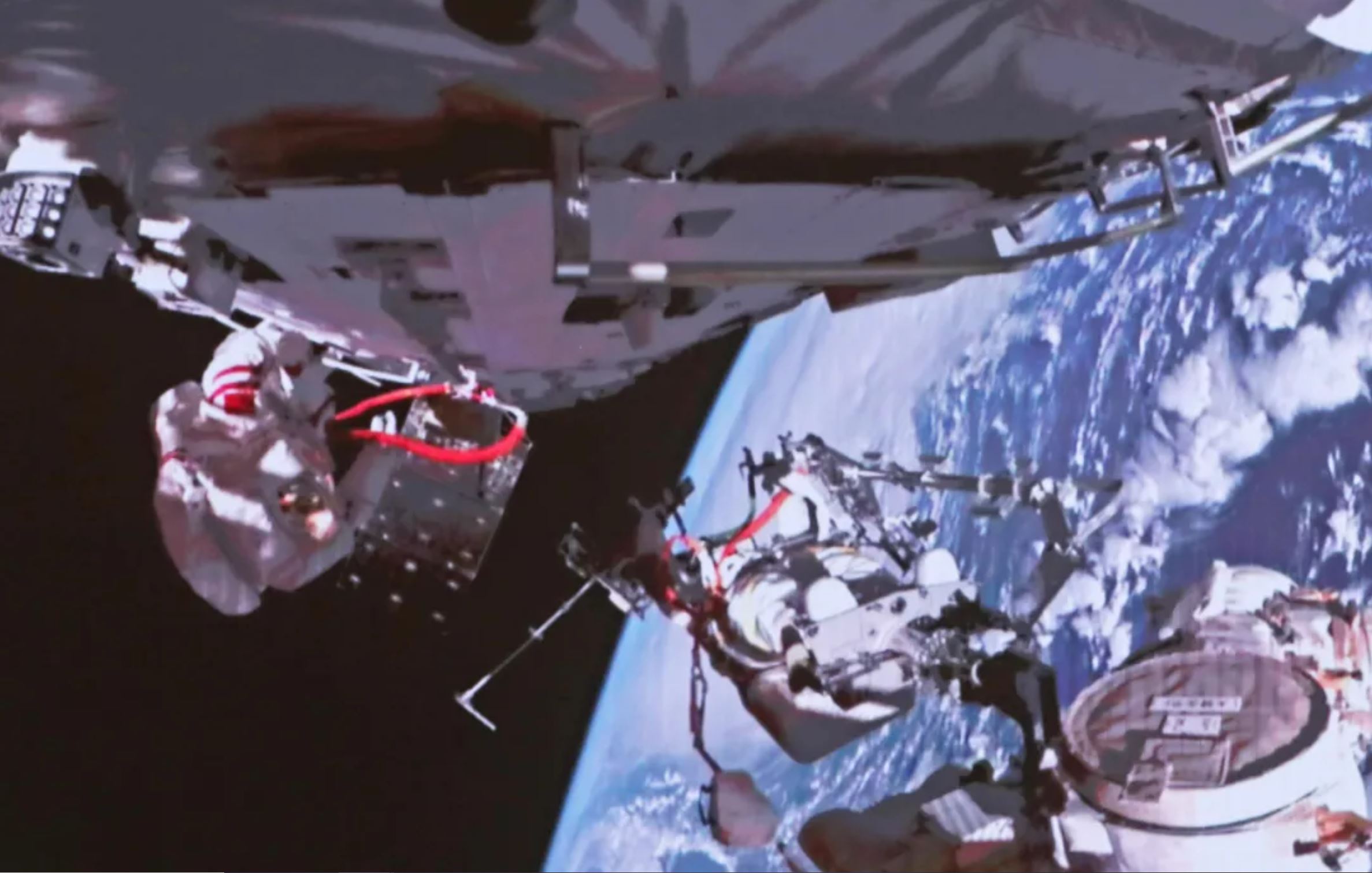HELSINKI — Two Shenzhou-13 astronauts embarked on a six-hour extravehicular activity Sunday to install equipment outside China’s Tianhe space station module.
Astronaut Ye Guangfu, wearing a Fetian EVA suit with yellow markings, opened the Tianhe airlock hatch at 5:44 a.m. Eastern Dec. 26 before exiting the space station module, according to the China Manned Space Agency.
Mission commander Zhai Zhigang, with red markings on his Feitian suit, followed his colleague outside at 6:37 a.m., embarking on his third spacewalk. Wang Yaping, the third Shenzhou-13 crew member, assisted from inside Tianhe, operating the module’s large robotic arm.
The pair raised a third panoramic camera outside Tianhe, performed further tests of equipment and made preparations for future missions. Operations were completed by 11:55 a.m. CMSA stated.
The EVA is the fourth conducted since the launch of the Tianhe core module in April this year. China will next year conduct tests involving Tianzhou cargo spacecraft currently docked with Tianhe and launch two new modules designed to host science research.
The EVA was Ye’s first spacewalk, having assisted Zhai and Wang Yaping from inside Tianhe during the first Shenzhou-13 EVA Nov. 7 Zhai became the first Chinese citizen to carry out a spacewalk during the 2008 Shenzhou-7 mission and participated in the November EVA with Wang.
Chinese state media broadcast a portion of the EVA, including English language coverage from CGTN.
Shenzhou-13 launched Oct. 15 and the three crew are expected to remain onboard until March 2022. The mission is the second to the Tianhe module, following the June-September Shenzhou-12 mission.
China’s human spaceflight agency and state media have begun providing more regular updates from the Shenzhou-13 mission, indicating greater confidence to realize outreach, political and soft power potential from the space station project. A number of official outlets also highlighted that the Shenzhou-13 spacewalk occurred on the anniversary of the birth of People’s Republic of China founder Mao Zedong.
Authorities previously limited the publishing of video and imagery from the Shenzhou-12 mission and first weeks of Shenzhou-13.
The Shenzhou-13 astronauts delivered a live science lecture from Tianhe Dec. 9, providing a tour of Tianhe and demonstrating a number of unique phenomena in microgravity.
The “Tiangong classroom” was targeted at school children, particularly to boost interest in STEM education. A question and answer session included questions from children at schools in Beijing, Guangxi Zhuang Autonomous Region and Sichuan Province in the southwest and Hong Kong and Macao from outside the mainland.
Live English language coverage of the event meanwhile presents a friendly, benevolent face to China’s space efforts, in contrast to recently reporting on hypersonic vehicle testing. More Tiangong classes are planned for the future.
